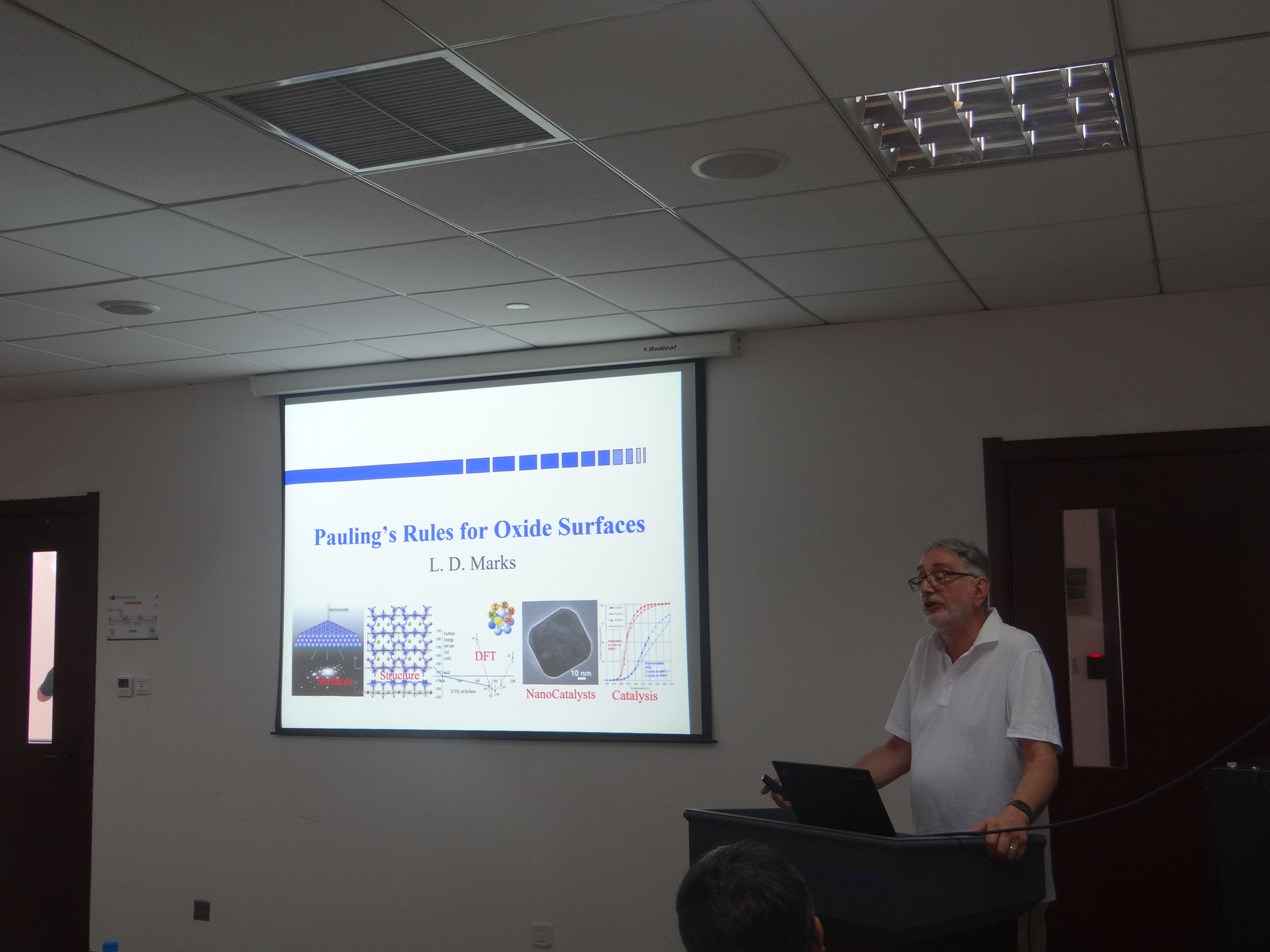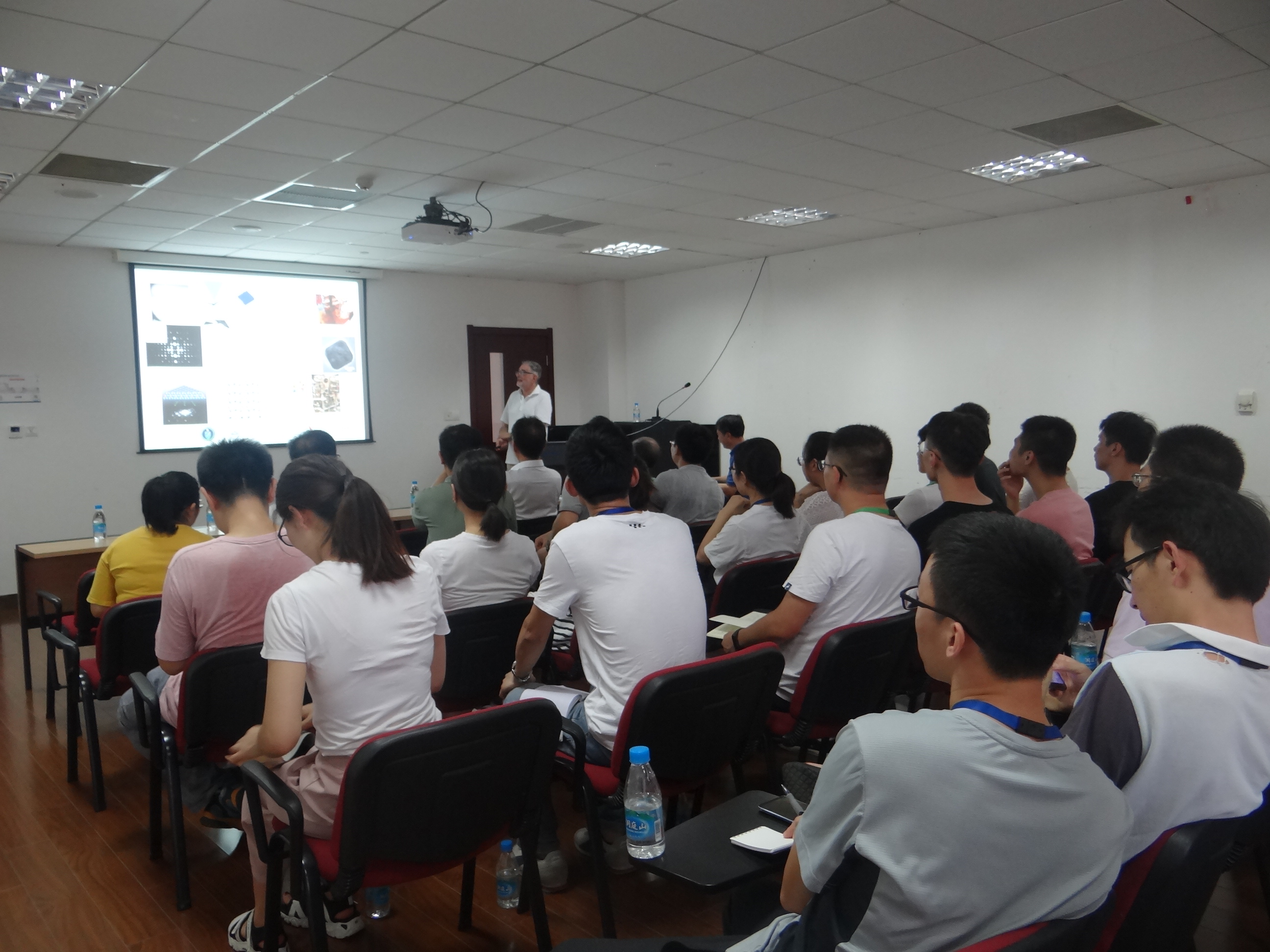Prof. Laurence Marks from Northwestern University of USA is a senior visiting scientist currently in Suzhou Institute of Nano-tech and Nano-bionics(SINANO) of Chinese Academy of Sciences(CAS) for two weeks, as invited by Prof. ZHANG Jinping and Prof. DING Sunan. During his visit, Prof. Marks will work together with local researchers at Vacuum Interconnected Nano-X Research Facility(Nano-X), focusing on the advanced applications and development of UHV electron microscope technology.
On August 1st, 2019, Prof. Marks presented an academic talk, titled as “Pauling’s Rules for Oxide Surfaces”. In this talk, Prof. Marks mentioned that oxide surfaces are one of the frontiers of surface science, of critical importance for a wide range of applications at the mesoscale or nanoscale, ranging from oxide electronics to heterogeneous catalysis and corrosion. In many cases, surfaces are treated as black boxes, or simple models/hypotheses, without a clear picture of where the surface atoms are. From a scientific approach, what controls the structure of oxide surfaces has been controversial for some years, with concepts based upon pure ionic models such as unbalanced dipoles, charges or even the polar catastrophe invoked.
Prof. Marks overviewed experimental and theoretical DFT results, particularly for strontium titanate surfaces, which strongly indicate that the rules Pauling outlined for bulk materials, apply equally well to oxide surfaces. The way to understand oxide surface is not to look into the vacuum, but to look into the bulk; oxide surfaces are governed by same inorganic chemistry as the bulk. Understanding and exploiting this lays the groundwork for design of oxide surfaces for applications.
Laurence Marks is a Professor of Department of Materials Science and Engineering, Northwestern University. His early researches in nanoparticle structure proved the existence of quintic twins with high resolution images, and was later designated as "Marks-decahedron". During his two postdoctoral studies at Cambridge and the University of Arizona, he systematically studied the structure, stress distribution and energy of nanotwin phenomena, and began to solve the problem of direct imaging on the atomic scale of nano-surface. Professor Marks has developed methods and procedures for direct surface imaging and simulation, theory and method of surface reflection electron microscopy, first-principles calculation method of atom fixed-point optimization, etc. to reveal the connotation of UHV-TEM observation. 
Prof. Laurence Marks 
During the lecture |

